How to grow a lemon from a seed at home?
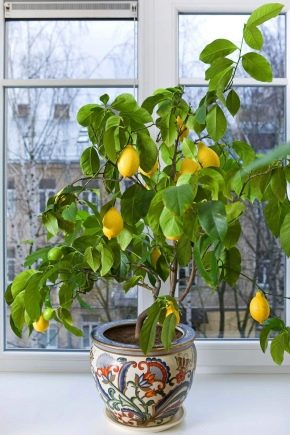
In the wild, lemon trees thrive in the tropics. They reach a height of six meters and bear fruit well. A perennial evergreen can be grown at home. Of course, it will not become so high, and the fruits will be minimal. In principle, they may not exist at all, since for this purpose, breeders recommend growing lemon trees through the cuttings procedure. But the most important thing is to take timely and competent care of the plant.
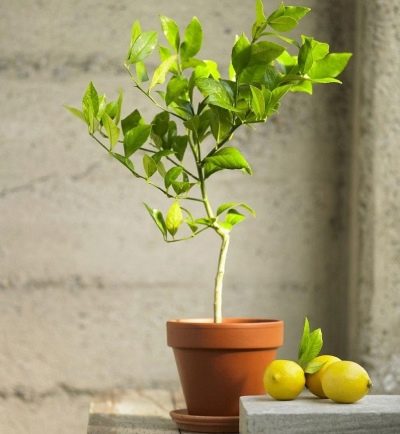
Selection and preparation of material
You can grow a lemon tree at home using a seed taken from a fruit purchased at a store. In order to calibrate the correct seeds, you need to select the largest and ripe lemons. They should not show signs of rot and deterioration. Seeds should be extracted from the fruit, and then the most suitable ones should be selected from the entire volume. They must meet several criteria:
- correct shape;
- integrity;
- neo-dryness.
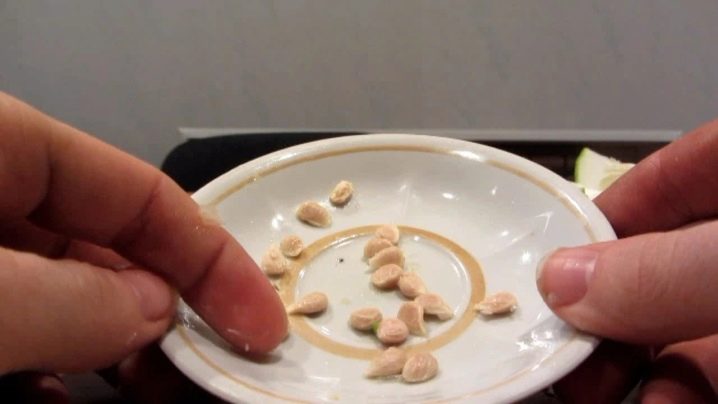
In order for the seeds to germinate with a greater degree of probability, it is recommended to take them from 2-3 different lemons. After the suitable seeds have been selected, it is recommended to carry out preparatory measures with them. They consist of several stages:
- seeds must be thoroughly but carefully rinsed under running water;
- dry on a paper towel or napkin;
- soak for several hours in Kornevin's solution.
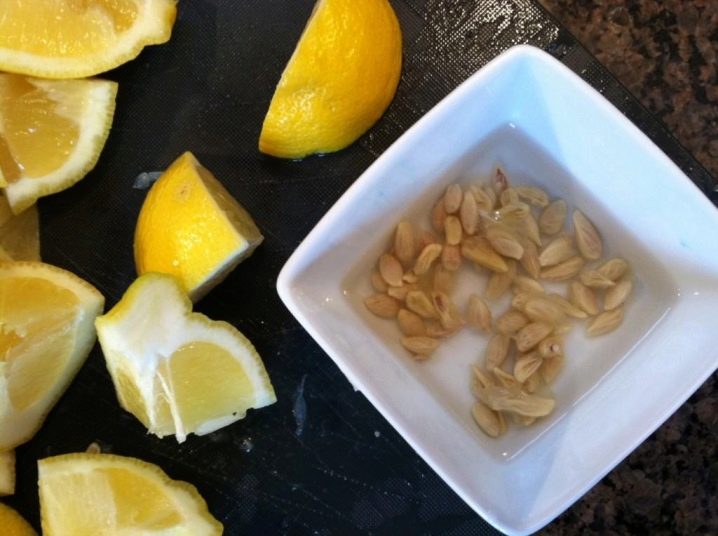
The last point is especially important, since this solution promotes rapid germination of seeds. But this can be done without it. To do this, soak the seeds for several days in a small piece of cloth moistened with warm water. As it dries, the matter can be additionally processed from the spray bottle.

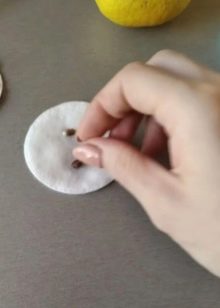

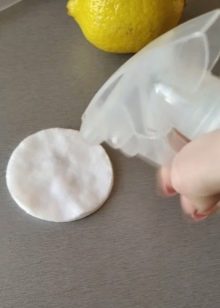
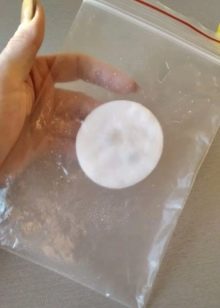
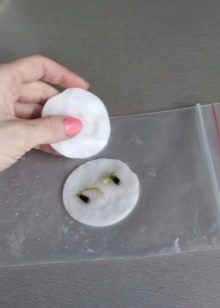
Suitable conditions
While the seeds are germinating, you should start preparing the soil and container. The main requirements for the land are looseness and fertility. This mixture can be purchased at the store. In this case, the choice must be given in favor of a certified sterile soil mixture. If for some reason it was not possible to buy such a composition, you can prepare it yourself. To do this, in equal proportions, you will need to mix the following components:
- sod land;
- humus;
- peat.
All these components must be thoroughly mixed. If we talk about the most suitable container, then the best option would be plastic or ceramic flower pots.
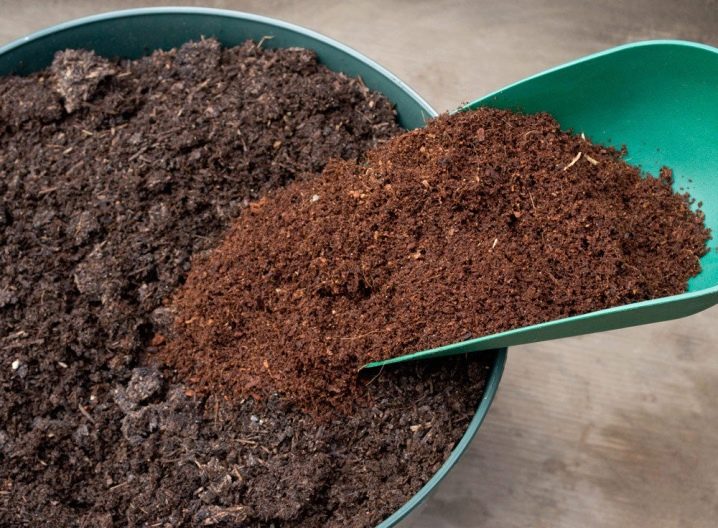
The lemon tree is best grown on a south-facing windowsill... It is recommended to protect the culture at all stages of development from drafts and avoid excessive exposure to sunlight.
Since lemons are originally adapted to tropical climates, it is important to withstand high humidity. At the same time, the room temperature should not fall below 25 degrees Celsius.
Landing
After the seeds have sprouted, and all the necessary materials and devices have already been prepared, you can proceed to the planting process. To begin with, a drainage layer is required to be laid at the bottom of the selected container. The most suitable option is vermiculite. Enough 1.5-2 cm. All the rest of the space in the pot must be covered with prepared or store-bought substrate.After filling, no more than 2-3 cm of free space should remain on top.
Now you need to plant the seeds themselves, deepening them by about 2 cm. One seed will not be enough, so 7-10 seeds are allowed to stick into the pot. Only 25-30% of them will be viable. Already from them it will be necessary to choose the most viable sprout. If you wish, you can leave all the ascended options.
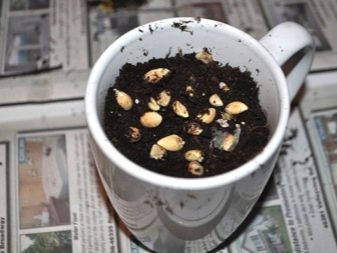
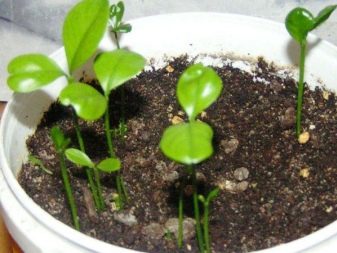
As already said, the air temperature should not fall below 25 degrees. If you cannot withstand such an indicator on the windowsill, you can put additional heating or just cover the pot with a plastic bag.
Since the seeds are initially laid in moist soil, in the first 5–7 days they do not need any maintenance at all. Excessive moisture these days can only do harm. This period can be safely designated as a state of rest. After 7 days, abundant spraying from a spray bottle is carried out. Then the procedure must be repeated as the soil dries out.
The most important thing is to avoid cracking it, as this can damage the sprouts.
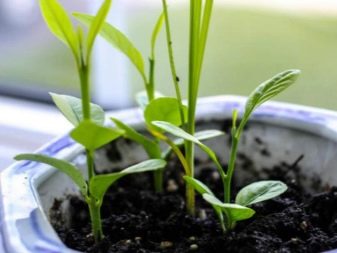
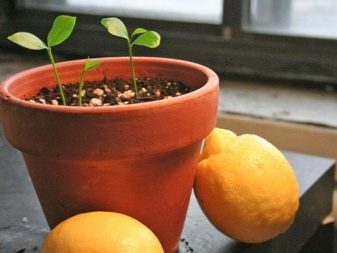
Care
When the seeds have finally sprouted, they must be properly and timely taken care of. It is not difficult to take care of the tree yourself at home. But the approach must be comprehensive. The event includes standard procedures: watering, loosening, forming the correct crown of the tree, pinching.
Watering
Watering is very important for any plant. The lemon tree is no exception. In order not to harm, you need to water as carefully as possible. A large number of requirements are imposed on this process, which are as follows.
- Watering is best melt or rainwater (depending on the season). The liquid should be at room temperature, without any impurities.
- Watering should be done dosed as the soil dries up.
- In no case should you water the lemon tree under the root from a watering can or bottle. Such actions will soon lead to the inevitable death of the plant. The fact is that if moisture constantly acts directly on the root system, then it will soon begin to rot.
- Need to water around the edges of the pot, but not at the root.

In the spring-summer period, watering should be especially plentiful, since the plant is in an active phase, it requires nutrients. As autumn approaches, the number and frequency of watering should be gradually reduced to a minimum. In winter, moistening is rarely carried out, only as the top layer of the soil dries out.
If for some reason there is a lot of moisture, then you can loosen the soil. But you also need to do this carefully so as not to damage the root system with your actions.

Top dressing
In order for the tree to be beautiful and strong, it is recommended to periodically feed it. It is also important to follow the rules here.
- In the first 1-3 months development of the sprout, any feeding is generally needed to exclude.
- Mineral substances are permissible to enter in the spring-summer period, no more than 2 times a month.
- In winter, top dressing is excluded. And in the fall, it is allowed to feed with complex mineral fertilizers at a frequency of 1 time per month.
Growing a lemon tree at home is almost impossible without top dressing. But here it is important not to overdo it, since a large amount of introduced fertilizers will have a detrimental effect on the overall development of the culture.
The lemon tree itself is very sensitive to any change. This can be too much or too little sun, over-watering, and more. The plant's first reaction to discomfort is leaf fall. If the situation is not corrected in a timely manner, the leaves will fall off completely.


Formation
The formation of the crown must be dealt with from the very beginning of the development of a young tree.... One should start by stimulating the growth of lateral shoots.To do this, pinch the buds of the upper shoots. Those shoots that grow in the inner part of the crown, and are also deformed for some reason, must be promptly removed with a sharp pruner.
The lemon tree reacts very quickly to changes in luminous flux. In order for the crown to be correct, you need to turn the pot with the plant about 10 times per daylight hours by 25% of the whole turn. Not only the attractive appearance of the plant depends on the uniformly formed crown, but also the appearance of future fruits on it.
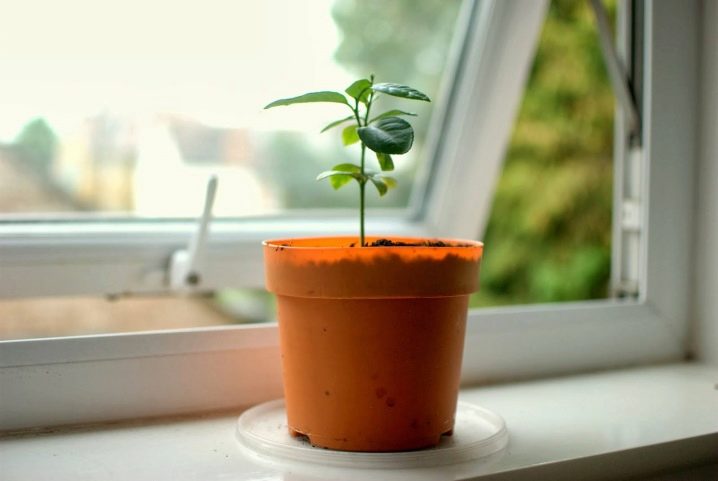
If after a year the first inflorescences appeared on the tree, then they need to be carefully pinched and removed.... If this is not done, then the plant will expend a lot of its strength on them, as a result of which it can wither and die. Flowering is permissible only if the proportion is correct. So, one flower should have at least 15 leaves.
If this rule is not observed, then it is recommended to get rid of the inflorescences in a timely manner.
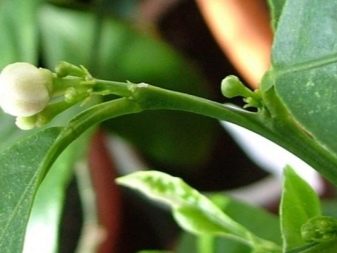
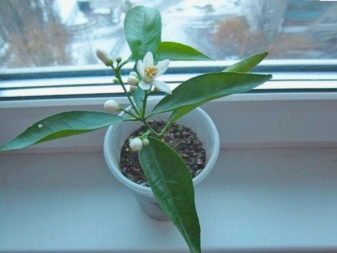
Transfer
After the sprout finally gets stronger or as it grows, it will have to be transplanted into a more spacious container. This must be done as carefully as possible so as not to damage the root system of the plant. Also, if possible, it is not recommended to touch the leaves. The step-by-step transplant process is as follows.
- Prepare a container of a suitable size.
- At the bottom, make a drainage layer of vermiculite, pour a little fertile soil.
- Move the tree to the pot. Especially carefully you need to lay the roots. Better if none of them are broken.
- Sprinkle with the remaining soil and water well.
It is best to replant in spring, so that during the warm season the lemon tree has time to get used to and get stronger in a new pot. If possible, do not change the location of the plant, that is, leave it on the same windowsill.

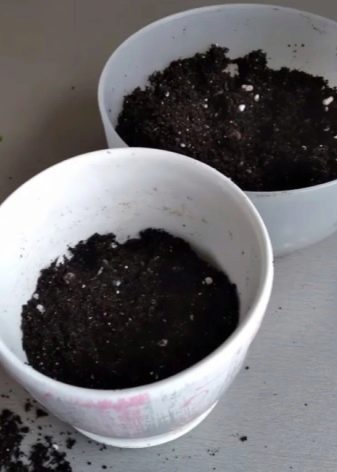
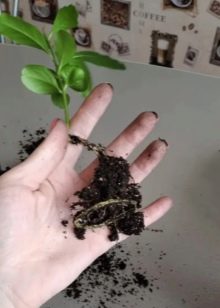
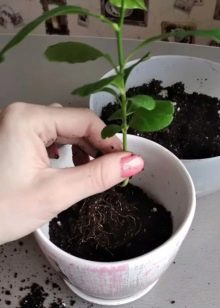

Graft
A seed-grown lemon tree must be grafted. There are several obvious reasons for such a procedure:
- flowering and fruiting occur much earlier;
- the stalk shares many positive qualities with the houseplant;
- the pot tree grows stronger and grows much faster;
- from it you can get cuttings for other lemon trees in the future.

Vaccination is a rather complicated process, it requires certain skills and compliance with conditions. The most significant of them are listed below.
- Sterile conditions.
- The grafting stem or bud was taken from a tree with decent characteristics. It is best to use cuttings from low-growing lemon trees as a scion.
- Before grafting, the tree itself needs to be watered vigorously for several weeks.
- Vaccination should be done with a sterile knife.
- After the procedure, you need to remove excess leaves and be sure to cover with foil.
- Watering after the procedure should be done in moderation. It is important that moisture does not get into the vaccination site.
- It is necessary to regularly ventilate the greenhouse, in a timely manner to get rid of the accumulated condensate.
It is recommended to vaccinate lemon on the closest “relatives”, that is, citrus fruits: orange, tangerine, grapefruit, lime and some others. In this way, different useful fruits will be obtained on one trunk. The most common vaccination option is splitting.
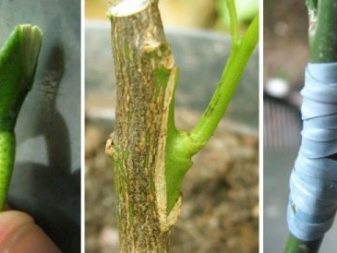
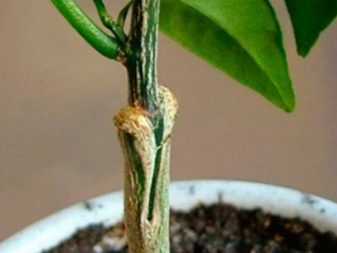
Diseases and pests
Indoor lemon is often attacked by various pests and diseases. And this happens with a weakened plant. Improper care leads to suppression of immunity:
- incorrect feeding, lighting, watering;
- lack of any trace elements: iron, phosphorus, manganese;
- correct, but untimely care.
The most common pests that attack the home lemon tree are listed below.
- Shield and false shield. Symptoms of the appearance of such pests are brown droplets (the insects themselves, hidden under the shells), leaf fall, drying of branches.If you do not get rid of the scale insect, then the plant will soon die. To begin with, pests need to be carefully removed with a spoon or some identical object. Treat the plant with soapy water.
- Citrus red mite. Its larvae appear on the outside of the leaves. If you do not get rid of them in a timely manner, then the ticks will entangle the plant with cobwebs, which will lead to inevitable death. The most common cause of a pest is excessively dry air. To get rid of it, it is recommended to spray the plant with Athletica solution at a concentration of 0.15%. Three treatments need to be done in one month.
- Mealybug... Another common pest, the main sign of the appearance of which is the visible results of vital activity on the leaves of the plant. From such exposure, they dry up and gradually fall off. The fruits of the tree also fall under the negative influence: spots and cracks form on their surface. The only method of control is the mechanical removal of larvae and adults, mainly females.
- Citrus aphid Are small pests of black or green color. Young shoots attack to a greater extent. You can get rid of aphids with the help of Athletic 0.15% solution. Spraying should be carried out 3 times in one month until the insects disappear completely.
- Whiteflywhich lays the larvae on the inside of the leaves. It is very difficult to get rid of this pest, but if you constantly spray with insecticides, then the enemy will be defeated. Within 3-5 days, you need to process a diseased tree 5 times.
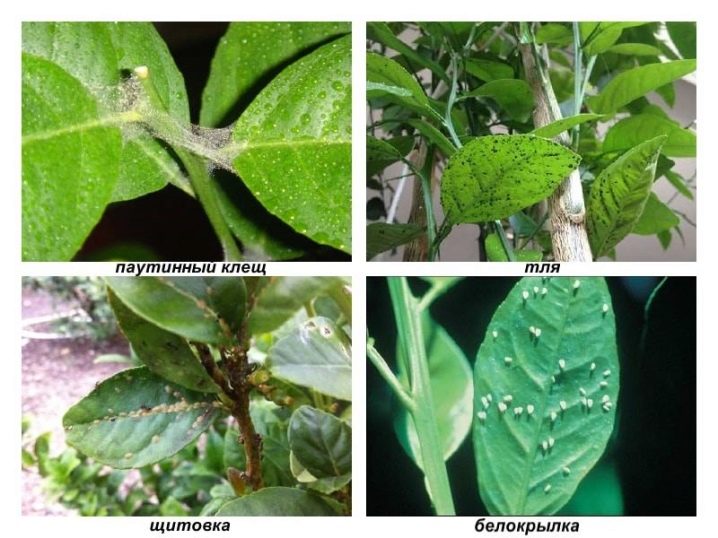
Indoor lemon trees are prone to a wide variety of diseases. The causative agents are fungal bacteria, viruses, mycoplasmas. If the plant is susceptible to any kind of fungal infection, then a gray-white bloom appears on the leaves and trunk. In advanced cases, black dots can be observed - these are sporulation. For the prevention and treatment of fungal infections, the drug Fitosporin is well suited.
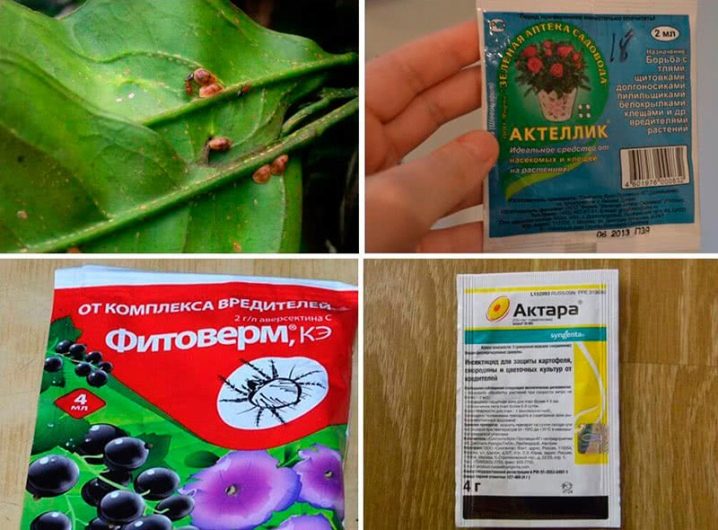
Useful Tips
In order for the lemon tree to please with an attractive appearance and bear fruit abundantly, it is recommended to adhere to useful tips. They are as follows.
- There is no need to change the location of the plant without special need, because when it changes, it experiences tremendous stress.
- If the lemon tree is on the windowsill, you cannot move it too close to the glass, as there is a risk of sunburn.
- It is permissible to use top dressing purchased in trusted stores. Poor-quality compounds are destructive for such a delicate plant.
- Fruits should not be touched often with your hands.
- Inspect the tree periodically for any changes. If symptoms of disease or pest attacks appear, they must be dealt with at an early stage.
If you properly care for the lemon tree at all stages of its development, then you can regularly get a good harvest of homemade fruits and use them for food.
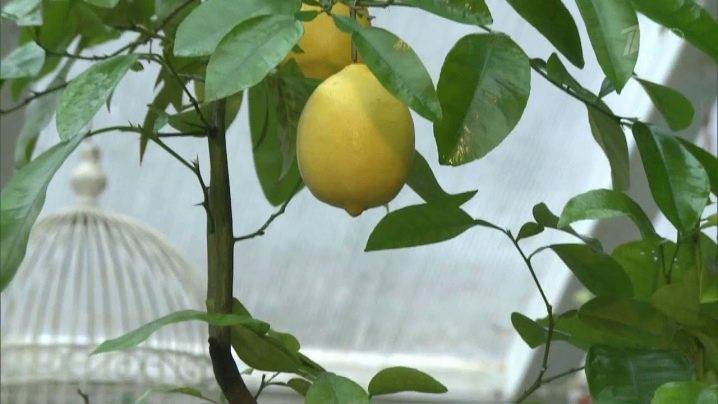


























The comment was sent successfully.